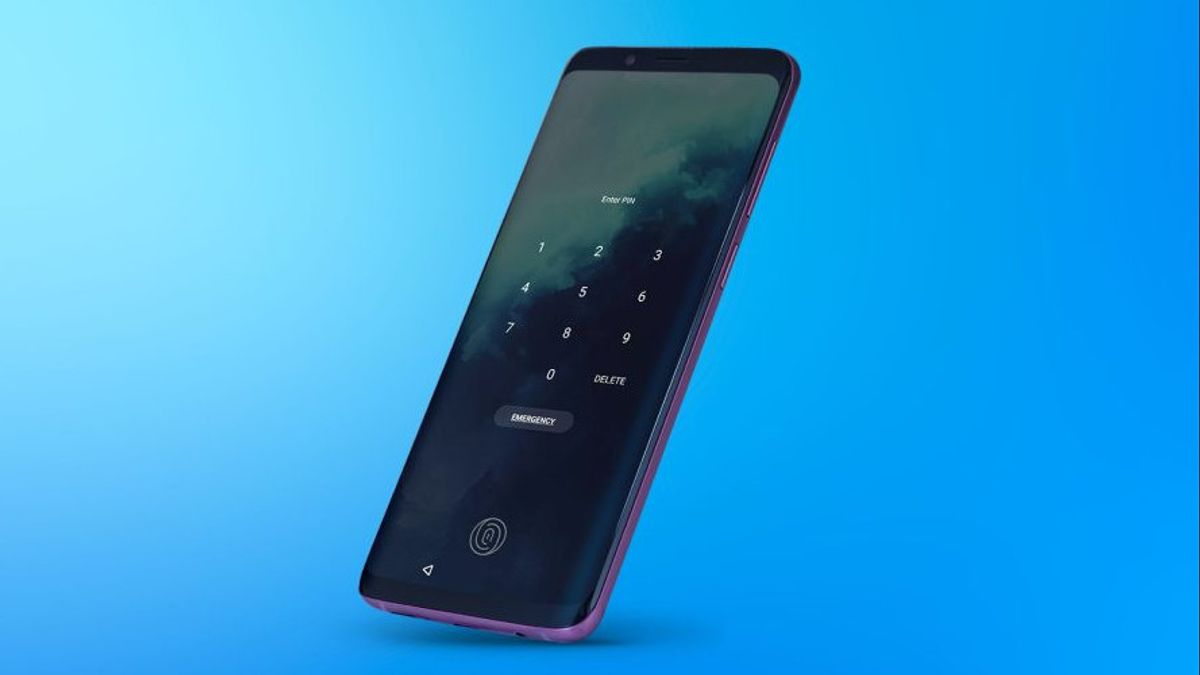JAKARTA - As technology develops, manufacturers of Android smartphones offer a variety of different ways to lock the screen. Like, setting a pattern lock, PIN, or password, to your fingerprint or even your face.
Such a variety of choices can be confusing. So, as a global cyber security company, Kaspersky outlines which methods are the safest, and which are the most practical.
PIN Code
In theory, a PIN code, especially one that is long, consisting of six or eight digits, can already be a fairly secure option for protecting your smartphone.
But there are some important points to remember. First, a PIN should ideally be a string of random numbers. For a PIN code to effectively protect your phone, it must be kept private. So, if someone wants to snoop on your PIN code, they have a lot of opportunities.
Password
With a combination of characters using numbers and letters, passwords are much more secure than even long PIN codes. But there is an obvious drawback, entering a long password hundreds of times a day becomes very tedious. Thus, such a security measure is only suitable as a backup option, which complements the more convenient attempt to unlock the phone using, say, your fingerprint.
Pattern Lock
Pattern locks are perhaps the most insecure way to protect your smartphone. In theory, there are about 390 thousand possible lock patterns on Android devices. Some of them are really complex. But in practice most people use very short and predictable patterns.
In about 50 percent of cases, the pattern starts from the top left corner meaning that the starting point is very easy to predict. And of course, people tend to use memorable shapes for their pattern locks. It makes guessing an exact pattern a lot easier than we might think.
SEE ALSO:
Plus, it's not that hard to peek at someone entering the pattern lock and remembering it through typical finger movements is easier to trace than touching virtual keys.
Fingerprint
The technology used to unlock smartphones with fingerprints dates back 10 years. However, of course there are drawbacks, namely that there are several ways to get into the phone by creating a fake fingerprint of the owner of the phone.
In addition, researchers recently discovered a number of vulnerabilities related to this authentication method. There is an attack that exploits this vulnerability called BrutePrint. That allows hackers to force the fingerprint recognition mechanism.
Face recognition
Unfortunately, for Android there is no full-fledged analogue of the already well-established Face ID technology, which is used on the iPhone. Android smartphones use the front camera for facial recognition. This is a much less secure and easier method to trick.
Even if the user is using another Android smartphone that allows confirming facial payments, it is unlikely that the technology running on it is any more secure.
In Kaspersky's view, for Android smartphone owners it is better to avoid using facial recognition to unlock your phone.
The English, Chinese, Japanese, Arabic, and French versions are automatically generated by the AI. So there may still be inaccuracies in translating, please always see Indonesian as our main language. (system supported by DigitalSiber.id)

















